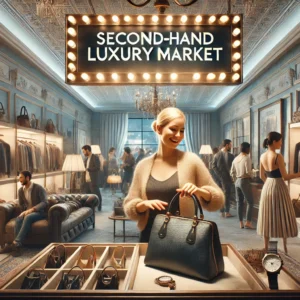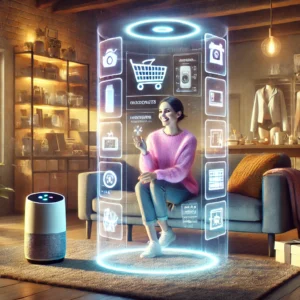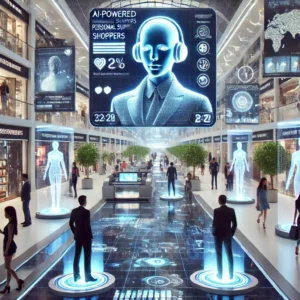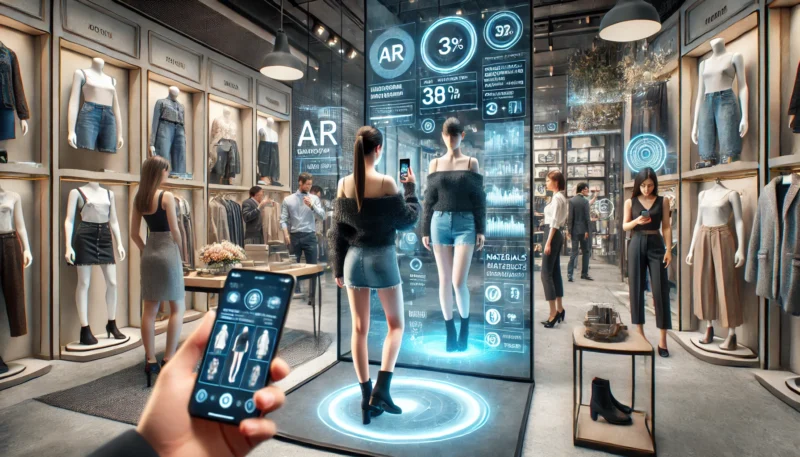
Imagine stepping into your favorite store without leaving your living room—where trying on clothes, checking out accessories, or even scanning items for real-time info becomes an immersive, interactive journey. Augmented Reality Shopping Experiences are rapidly transforming retail, blending digital magic with tangible product insights. This trend, powered by breakthrough tech and evolving consumer behavior, is reshaping how we shop and interact with brands.
In today’s hyper-connected world, AR is not just a gimmick. It’s becoming a pivotal part of retail strategy—from government policy shifts and political debates to cutting-edge research and even celebrity endorsements. Whether you’re a tech-savvy millennial or a nostalgic baby boomer, AR is challenging our old notions of shopping while inviting us to explore the future in a whole new light.
The Evolution of AR in Retail
The retail landscape has come a long way. Initially, augmented reality (AR) was seen as an experimental add-on—something cool but not entirely essential. Fast forward to 2025, and AR has blossomed into a must-have tool that brings products to life. Think about virtually trying on outfits with a few swipes of your phone or scanning a piece of furniture to see how it fits in your room. It’s like having a mini personal stylist and interior designer at your fingertips.
Several notable studies, such as those featured on ScienceDirect and ResearchGate, provide a deep dive into how AR is revolutionizing the shopping experience. Researchers are continuously exploring how this technology can blend seamlessly with our everyday lives—making the entire shopping process not just easier but also more engaging and informative.
Key Points:
- Virtual Try-Ons: Allow consumers to see how clothes, accessories, or even makeup look before purchasing.
- Real-Time Product Info: Enable instant access to details like materials, user reviews, or even maintenance tips.
- Enhanced Engagement: Create interactive experiences that encourage consumers to explore and experiment.
Government and Policy Perspectives
Government agencies are no longer turning a blind eye to technological innovations in retail. In fact, many are actively supporting digital transformation initiatives that include AR. Policies aimed at fostering tech innovation and sustainable business practices are now intertwined with the retail sector. For instance, European governments have begun offering incentives for tech-driven retail solutions that reduce waste and enhance consumer trust. These moves are not just about economic growth but also about embracing a cleaner, smarter future.
On the political front, debates have emerged around data privacy and the regulation of emerging technologies. Legislators are caught between championing innovation and ensuring consumer protection. Some argue that while AR opens up exciting avenues for business, it also brings risks related to data security and privacy breaches. In recent hearings, political leaders emphasized the need for clear guidelines to help companies safely harness AR’s potential without compromising personal information.
A recent Deloitte report has underscored these regulatory challenges, suggesting that robust policies are essential for sustaining long-term growth in the AR retail sector.
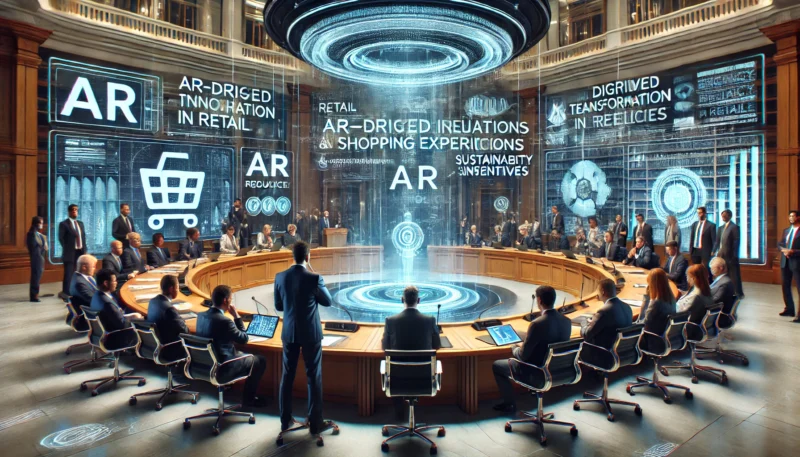
Scientific and Technological Innovations
The backbone of AR shopping experiences is relentless research and innovation. Research labs at prestigious institutions like MIT, Stanford, and even emerging tech hubs worldwide are hard at work refining AR technology. These scientists are delving into areas like computer vision, machine learning, and even neuroscience to better understand how consumers interact with augmented reality.
For example, one fascinating project leverages AI to improve the accuracy of virtual try-ons, ensuring that a digital dress drapes and moves realistically on a user’s avatar. This breakthrough, detailed in recent findings on Fingent, is just one example of how cutting-edge research is setting the stage for a more immersive shopping experience.
Researchers have also been exploring how AR can be combined with other technologies, such as virtual reality (VR) and artificial intelligence (AI), to create hybrid experiences that are both informative and entertaining. This blend of technologies is expected to lead to richer, more intuitive interfaces—ultimately making online shopping a more humanized, interactive process.
Innovations at a Glance:
- AI-Powered Virtual Try-Ons: Enhancing realism in digital fittings.
- Blockchain for Authenticity: Ensuring product information is tamper-proof.
- Interactive Catalogs: Merging AR with AI to deliver personalized shopping suggestions.
Celebrity Endorsements and Social Buzz
It’s hard to talk about augmented reality shopping without mentioning the celebrities who are championing its cause. Over the past few years, stars like Zendaya and Harry Styles have been spotted endorsing AR-driven fashion apps on social media. One celebrity famously quipped, “Trying on clothes virtually is the future—it’s like dressing up in a digital wonderland!” Such high-profile endorsements have not only sparked widespread interest but have also made AR experiences seem cool and accessible.
These endorsements resonate particularly well with younger audiences, who are always on the lookout for the next big thing. The blend of tech-savviness and style has helped AR break out of its niche and become a mainstream trend. Influencers and bloggers are actively sharing their experiences with AR shopping tools, often highlighting how these tools allow for more sustainable shopping practices by reducing the need for physical returns and excess production.
However, it’s not just the youth who are excited. Even older consumers, though sometimes skeptical at first, are finding themselves pleasantly surprised by the ease and practicality of AR. Many have commented on social media about how digital try-ons have saved them countless hours and minimized shopping mishaps.
Generational Perspectives: Bridging the Gap
The rise of AR in retail offers a fascinating study in generational differences. Younger shoppers, typically more tech-oriented, quickly adopt AR tools and integrate them into their daily lives. For many Gen Z and millennial consumers, the idea of virtual fitting rooms and interactive product scans is not only appealing but also essential in a fast-paced digital era.
Conversely, older generations approach AR with a mix of curiosity and caution. Some seniors reminisce about the traditional shopping experiences of the past—touching fabrics, trying on clothes in physical stores, and enjoying face-to-face interactions. Yet, as more intuitive and user-friendly AR interfaces emerge, a growing number of older consumers are beginning to embrace the technology. They appreciate how AR can bridge the gap between convenience and personalized service, offering an experience that is both modern and respectful of traditional values.
This diverse consumer landscape has led to a vibrant social dialogue. Family conversations now often include playful debates about whether the “old school” or “new school” way of shopping is better. Such discussions highlight how AR shopping experiences are not just a technological upgrade but a cultural shift that touches on various aspects of society.
Political and Economic Implications
Political discourse around AR shopping is as multifaceted as the technology itself. Some policymakers argue that AR can democratize the shopping experience by making high-end fashion accessible to a wider audience. Others warn that the rapid digitization of retail could widen the gap between tech-savvy consumers and those less comfortable with digital interfaces.
Economically, AR is proving to be a powerhouse. Global market reports, like those from MarketsandMarkets, forecast robust growth in the AR retail sector, with revenues projected to soar into the billions. Major retailers and tech companies are investing heavily in AR infrastructure, viewing it as a critical component of their future business strategies.
Here are a few economic insights:
- Revenue Growth: Projections indicate that the AR retail market could see multi-billion-dollar earnings by the mid-2020s.
- Increased Consumer Engagement: AR tools are shown to increase conversion rates and reduce return rates.
- Investment in Innovation: Global giants are channeling significant capital into developing next-generation AR solutions.
Politically, the investment in AR is stirring debates about job creation and the future of brick-and-mortar stores. While some fear that increased digitalization might lead to job losses in traditional retail, others see it as an opportunity for upskilling workers and creating new roles in tech support, content creation, and digital marketing. The dialogue is complex and sometimes even contradictory, reflecting the broader societal adjustments to rapid technological change.
The Future of AR Shopping: Trends and Predictions
As we look to the future, augmented reality shopping experiences are poised to become even more immersive and integrated into our daily routines. Emerging trends suggest that AR will soon move beyond just trying on clothes or scanning product info. Imagine shopping in a virtual store where you can interact with digital avatars, receive personalized style advice, or even attend virtual product launches.
Future innovations may include:
- Hyper-Personalized Shopping: AI-driven recommendations that adapt in real time to user preferences.
- Immersive Retail Environments: Fully virtual stores that mimic the ambiance and layout of luxury boutiques.
- Integration with Wearable Tech: AR experiences that blend with smart glasses and other wearable devices, offering a seamless digital overlay on the real world.
- Cross-Platform Synergies: Combining AR with other technologies like VR, IoT, and 5G to create a more interconnected and responsive shopping ecosystem.
One might even say that AR will eventually redefine the very concept of retail. Not only will it enhance convenience, but it could also transform shopping into a holistic, sensory experience that bridges the gap between the digital and physical worlds. As this technology matures, the lines between online and offline shopping will blur, offering consumers unprecedented control over their buying journey.
Social and Cultural Impact
Beyond the technological marvels and economic forecasts, the cultural implications of AR shopping are profound. At its heart, AR offers a new way to connect with products and brands—a way that is both deeply personal and widely accessible.
Social Benefits:
- Enhanced Accessibility: AR can help individuals with disabilities by offering voice commands and visual overlays that make navigation and decision-making easier.
- Community Engagement: Social media platforms are buzzing with AR shopping experiences, where users share screenshots of virtual try-ons, reviews, and creative customizations.
- Sustainable Choices: By reducing the need for physical returns and excess inventory, AR contributes to more sustainable shopping practices.
In a quirky twist of fate, the technology that once seemed reserved for gamers and tech enthusiasts now finds itself at the center of everyday consumer life. Even in casual coffee shop chats, you might overhear someone exclaim, “I just tried on a jacket virtually and it looked amazing—no fitting room required!” This melding of digital innovation and personal experience underscores a broader cultural shift toward a more connected, tech-integrated lifestyle.
Real-World Examples and Use Cases
Practical applications of AR in retail are emerging all around us. Consider how major fashion brands are incorporating AR into their marketing strategies. Retailers are offering apps where customers can scan QR codes on in-store displays to view additional product information, watch styling videos, or even see a 360-degree view of the item.
For instance:
- Virtual Fitting Rooms: Brands allow users to upload a photo or use a live camera feed to try on different outfits virtually.
- Interactive Product Displays: In-store kiosks equipped with AR let shoppers visualize how a piece of furniture might look in their home, complete with color and design variations.
- Enhanced User Manuals: Some products now come with AR-enabled manuals that provide step-by-step instructions when scanned with a smartphone.
These examples, highlighted on platforms like Econsultancy, demonstrate that AR isn’t just about the “wow” factor—it’s about adding tangible value to the shopping experience.
Personal Stories and Anecdotes
Let’s get a bit personal. I remember a time when I hesitated to try a new tech gadget, thinking, “This is just another fad.” Yet, my perspective shifted when a friend excitedly shared her AR shopping experience—she virtually tried on a pair of designer sneakers and swore they fit perfectly without the hassle of traditional shopping. Such stories echo across social media and word-of-mouth, painting AR as not only innovative but also deeply human in its ability to connect us with the products we love.
Older generations, too, have their unique take on AR. One gentleman, in his seventies, mentioned how the technology reminded him of the “magic of television” when it first emerged, yet he appreciated how AR allowed him to engage with products on his own terms. Conversely, many young shoppers see AR as an essential extension of their digital lifestyle—an exciting, interactive tool that enhances the entire retail experience.
Challenges and Opportunities
No technological revolution comes without its fair share of challenges. Despite its growing popularity, augmented reality shopping experiences face hurdles such as privacy concerns, high development costs, and sometimes, a steep learning curve for less tech-savvy users.
Some key challenges include:
- Data Privacy: With AR apps collecting extensive user data, ensuring that information remains secure is paramount.
- User Adoption: Bridging the gap between digital natives and those resistant to change can be tricky.
- Technical Limitations: Despite rapid advancements, issues like battery drain and processing speed still affect the seamless operation of AR apps.
Yet, these challenges also pave the way for exciting opportunities. Continuous improvements in AR technology, bolstered by research and collaborative initiatives, are steadily mitigating these issues. Companies are investing in more secure systems, intuitive interfaces, and even educational programs to help users make the most of AR shopping. As these barriers fall, the potential for a fully integrated, digitally enhanced retail experience becomes ever more attainable.
Global Business and Revenue Insights
The economic impact of augmented reality in retail is undeniable. According to market research on MarketsandMarkets, the AR retail market is expected to skyrocket in the coming years. Retailers worldwide are leveraging AR to boost engagement, drive conversion rates, and ultimately, increase revenue.
Global business leaders are taking note:
- Increased Investment: Major tech companies and retail giants are pouring billions into AR research and development.
- Revenue Boost: Early adopters report significant upticks in sales, with some platforms attributing up to a 30% increase in conversion rates to AR features.
- New Business Models: AR is paving the way for innovative business models that blend online and offline retail, creating a seamless customer journey.
Such developments not only promise to revolutionize retail economics but also invite a more inclusive and interactive consumer culture.
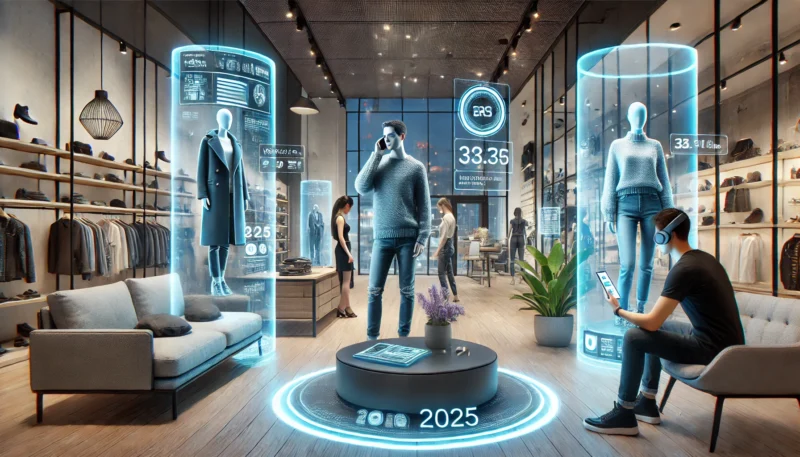
The Road Ahead: Future Trends
Looking forward, the future of augmented reality shopping experiences is brimming with potential and possibility. As technology advances, expect to see:
- Deeper Personalization: With more refined algorithms and data insights, AR will offer highly tailored experiences that cater to individual preferences.
- Integration with Smart Devices: The rise of wearable tech like smart glasses could make AR an even more integral part of everyday shopping.
- Omnichannel Experiences: Retailers will likely develop systems that seamlessly integrate AR across all channels, merging in-store experiences with online platforms.
- Global Expansion: As more markets adopt AR technologies, we can anticipate significant growth in emerging economies, spurred by increased internet penetration and mobile adoption.
Even if some days the tech feels a bit disjointed or the updates seem patchy, one thing remains clear: augmented reality is here to stay, continually evolving and enriching the way we shop.
FAQs
Q1: What exactly are augmented reality shopping experiences?
A: Augmented reality shopping experiences use digital overlays to enhance the physical shopping process. This includes virtual try-ons, real-time product information, and interactive displays that make shopping more engaging and personalized.
Q2: How is AR transforming traditional retail?
A: AR transforms traditional retail by bridging the gap between physical and digital experiences. It enables virtual try-ons, interactive product demos, and personalized recommendations, thereby increasing engagement and reducing return rates.
Q3: Are there any privacy concerns with AR shopping apps?
A: Yes, as AR apps collect user data for personalized experiences, privacy and data security remain top priorities. Companies are working to implement robust security measures and comply with data protection regulations.
Q4: How do government policies impact the growth of AR in retail?
A: Governments worldwide are beginning to support digital innovation in retail by offering incentives and establishing guidelines for data security, which helps foster the growth of AR technologies.
Q5: What do industry experts predict for the future of AR retail?
A: Experts predict that AR retail will see exponential growth, with deeper personalization, integration with smart devices, and a significant increase in global revenue streams as more consumers adopt the technology.
A Call to Experience the Future of Shopping
From the bustling streets of major cities to the comfort of your own home, augmented reality shopping experiences are revolutionizing how we connect with brands and products. Whether you’re a tech enthusiast eager to explore new digital frontiers or a traditional shopper curious about the potential of virtual try-ons, AR invites you to step into a world where innovation meets personal expression.
Don’t miss out on the wave of digital transformation—immerse yourself in the future of retail, explore interactive shopping apps, and experience firsthand how technology can make every purchase more engaging and informed.
For more deep dives into the world of digital retail and the latest tech trends, check out our related articles on our blog and subscribe to our newsletter. Stay updated, stay curious, and join the revolution that is redefining the shopping experience!

